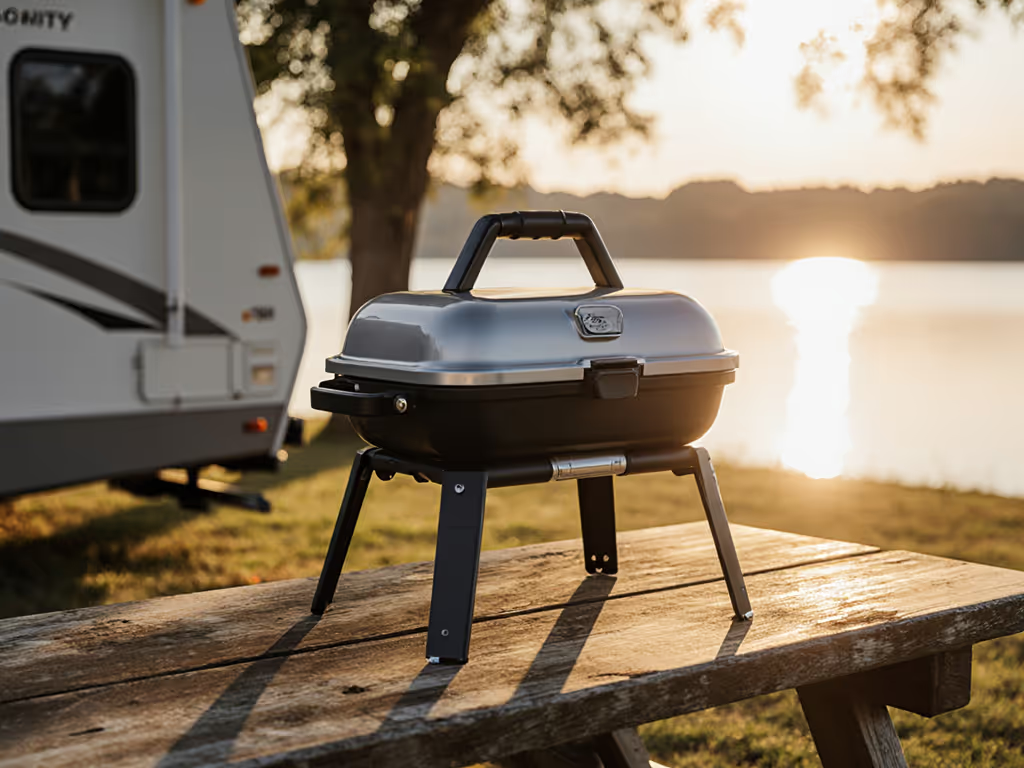
Senior-Friendly Portable Travel Grills: Safe & Easy Setup
Discover senior-friendly portable grills with safe, easy setup. Compare top picks, fuel choices, and a checklist for stability, low lifting, and cost.
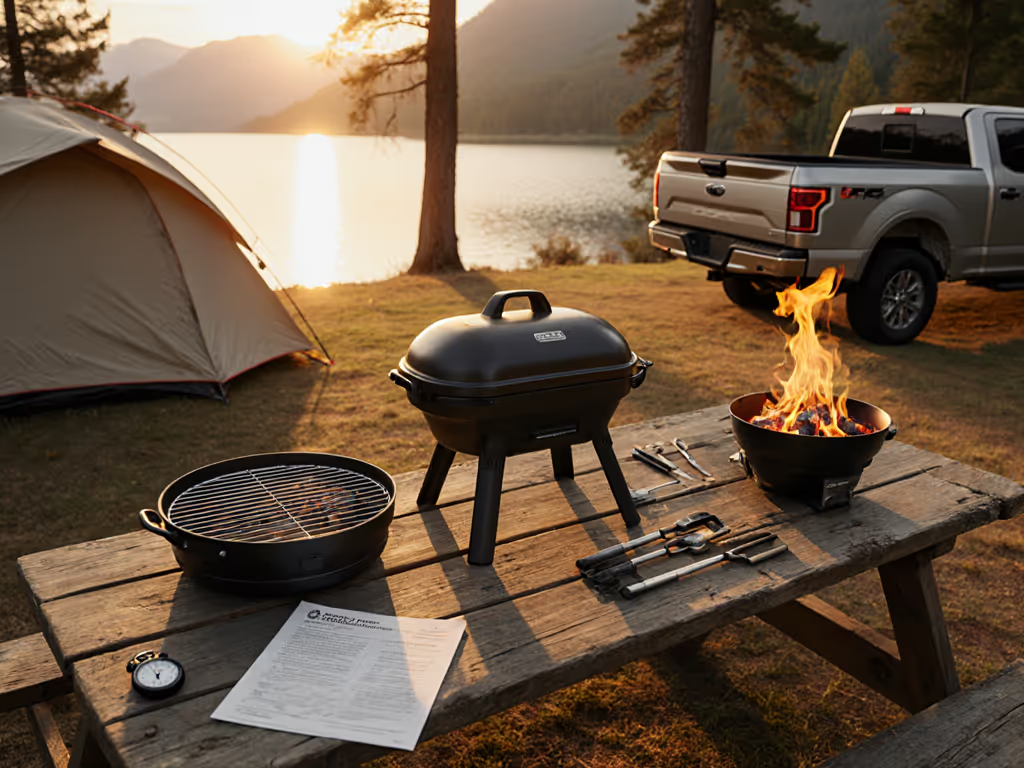
Best Portable Grills for Camping and Tailgating: The Ultimate Packability & Setup Speed Showdown
If you have ever searched for the best portable grills for camping and tailgating and felt overwhelmed, you are not alone. Between fuel choices, setup time, weight, and rules that change from one trailhead to the next parking lot, the options can blur together. For a quick primer on grill types and use cases, see our comprehensive portable grill types guide. That is exactly why Searcase field-tests grills against what matters most outdoors: packability, setup speed, and reliable heat in real-world wind and altitude.
In this listicle, you will find quick-hit picks, a comparison table you can skim in seconds, and practical strategies that make cooking in the wild feel as smooth as your home kitchen. Along the way, we will share Searcase’s maintenance and safety tutorials, fuel comparisons, and cleanup tactics that keep you compliant and fast. Ready to turn a trunk lid or picnic table into your mobile kitchen?
Yes, power ratings and grate size matter, but how quickly you can go from parked to plating changes your whole day. In our field notes, a five-minute difference in setup can be the margin between hot burgers or lukewarm snacks when kickoff starts. That is why Searcase's comparisons and decision guides put packability and setup speed right alongside heat control and durability.
Packability shows up in carrying weight, folded volume, and how a grill nests with fuel, tools, and food. Setup speed depends on leg design, ignition, and how predictable your fuel is under wind. For reference, many compact propane [liquefied petroleum gas] grills light and stabilize in 5 to 8 minutes, charcoal typically needs 15 to 25 minutes to ash over, and pellets average 10 to 15 minutes to reach steady cooking temps, depending on ignition style and ambient conditions.
One more real-world variable: restrictions. Some stadiums ban open flames or charcoal, some campgrounds switch to propane-only during high fire danger, and altitude can slow boil times and shift searing performance. Searcase tests in these scenarios so you know which grill keeps cooking when the rules or the weather changes.
Below are ten field-tested archetypes representing the most useful portable grill designs for campers, hikers, and tailgaters. Think of them as “roles” you can shop for, then choose a brand and model that matches your budget and features. We note typical heat-up times and best uses so you can align with your style and constraints.
To help you better understand best portable grills for camping and tailgating, we've included this informative video from Boulevard Home. It provides valuable insights and visual demonstrations that complement the written content.
For hikers and minimalists, this thin, folding steel or titanium frame turns any campsite into a steady charcoal platform. It packs nearly flat and stows next to a cutting board. Expect 15 to 20 minutes to get coals cooking; use a small chimney to shave time and wind shields to protect the bed.
Best for two people, fast sausages or skewers, and anyone who values a sub-5-pound [2.3-kilogram] carry weight above all. Bring a spark screen where regulations require it and a silicone mat for leave-no-trace cleanup. 2. ### The Compact Tabletop Propane [Liquefied Petroleum Gas] Grill
This is the tailgate hero: flip out the legs, click the piezo ignition, and you are preheating in under ten minutes. One-pound [0.45-kilogram] cylinders are widely available, and a single cylinder contains about 21,600 BTU [British thermal unit], enough for a day’s worth of burgers and brats at moderate heat.
Choose this if you want clean, quick, and predictable heat with minimal ash. Bonus: stadiums and parks often prefer sealed-fuel systems over loose charcoal during high fire risk periods. 3. ### The Two-Burner Tailgate Gas Griddle
Griddles shine for breakfast burritos, smash burgers, and veggie hash without a grate’s gaps. A two-burner setup offers zone cooking, so you can sear on one side and hold on the other. Preheat is 5 to 8 minutes; wind guards improve consistency.
If you feed a crew, griddles deliver high-output surface area that translates directly to faster queues and happier fans. Look for a drip channel that empties into a lined cup for fast, compliant disposal. 4. ### The Portable Pellet Mini-Smoker
Want wood flavor and set-it-and-forget-it convenience? A compact pellet unit nails wings, ribs, and cedar-plank salmon. It needs electricity for the auger and fan, so plan a power source. Heat-up averages 10 to 15 minutes, and pellets shine for longer cooks.
Bring a battery power station with pure sine wave output or a vehicle inverter rated for your grill’s draw. Searcase’s fuel comparisons show that hardwood blends balance clean burn and mild smoke for mixed crowds. 5. ### The Cast-Iron Hibachi [Japanese Portable Charcoal Grill]
Nothing beats the sear of cast iron for steak bites or thick-cut zucchini. This style is compact, durable, and hot, holding heat well once lit. Expect 15 to 25 minutes to get to searing conditions with a small coal bed.
Heavier than folding frames, but wind-resistant and steady. Use a sturdy trivet or heat-safe mat, and carry a small shovel plus metal can for ash that you can cool and pack out. 6. ### The Infrared [Infrared] Briefcase Grill
Infrared burners aim heat at the cooking surface for intense searing, turning a small footprint into steakhouse browning. Setup is similar to other gas grills, with a fast 5 to 7 minute preheat. This style excels when you want crust without flare-ups.
It is efficient in cold and windy conditions, a common tailgate truth. Just watch grate height; infrared surfaces cook hot and fast, so flip early and often until you learn the tempo. 7. ### The Electric Grill-Griddle Hybrid
Where open flames are restricted, electric keeps you in the game. Paired with a GFCI [ground fault circuit interrupter]-protected outlet and a 1,000 to 1,700 watt draw, you can cook burgers, dogs, and veg with no flame.
Preheat can run 8 to 12 minutes in cold weather, and wind matters less without combustion. For dialed-in results outdoors, see our portable grill temperature control guide. Crucial: use a rated cord and keep connections off damp ground to avoid tripped breakers. 8. ### The Convertible Fire Pit Grill
Some portable fire pits accept a grill grate accessory, letting you switch from campfire ambiance to open-fire cooking. These shine where regulations allow contained wood fires and where you want both warmth and dinner.
Setup revolves around ember management: a bed of glowing coals delivers even heat, while direct flames bring drama and hot spots. Always check burn bans and have a spark screen handy. 9. ### The Backpacking Wood Stove With Grill Lid
For remote lakes and high routes, a titanium wood stove with a grill lid turns twigs into a legitimate cook surface. Boils are quick thanks to chimney effect airflow; grilling requires steady feeding and attention.
Bring a backup: a tiny alcohol burner or solid-fuel tabs ensure dinner in wet conditions. Pack a small carbon monoxide [CO] detector if cooking under any cover; safety first in shoulder seasons. 10. ### The Collapsible Charcoal Kettle Mini
A scaled-down kettle with folding legs and a locking lid gives you classic charcoal performance in a small package. Cooking space fits four to six patties or a spatchcocked chicken with careful charcoal placement.
Master two-zone fires and you unlock sear and roast in one footprint. A compact chimney starter plus tumbleweed cubes make lighting repeatable in wind.
Skim this table to match your crew size, fuel preferences, and time constraints. We benchmark packability on how easily the grill nests with a weekend kit, not just raw weight.
| Archetype | Typical Weight | Folded Size | Fuel | Heat-Up Time | Cooking Area | Best Use | Setup Ease |
|---|---|---|---|---|---|---|---|
| Ultralight Folding Charcoal Box | 2 to 5 lb [0.9 to 2.3 kg] | Flat, briefcase-thin | Charcoal | 15 to 20 min | 2 to 3 servings | Backpacking, minimal kits | Moderate |
| Tabletop Propane [Liquefied Petroleum Gas] Grill | 9 to 20 lb [4.1 to 9.1 kg] | Shoe-box to briefcase | Propane [LPG] | 5 to 8 min | 3 to 5 servings | Tailgates, parks | Easy |
| Two-Burner Gas Griddle | 18 to 35 lb [8.2 to 15.9 kg] | Flat rectangle | Propane [LPG] | 5 to 8 min | 6 to 8 servings | Teams, families | Easy |
| Portable Pellet Mini-Smoker | 20 to 45 lb [9.1 to 20.4 kg] | Toolbox or suitcase | Wood pellets + power | 10 to 15 min | 4 to 6 servings | Flavor-first cooks | Moderate |
| Cast-Iron Hibachi | 10 to 30 lb [4.5 to 13.6 kg] | Compact block | Charcoal | 15 to 25 min | 2 to 4 servings | Searing fans | Moderate |
| Infrared Briefcase Grill | 12 to 25 lb [5.4 to 11.3 kg] | Briefcase | Propane [LPG] | 5 to 7 min | 3 to 4 servings | Steak night | Easy |
| Electric Grill-Griddle Hybrid | 12 to 25 lb [5.4 to 11.3 kg] | Flat rectangle | Electric | 8 to 12 min | 3 to 5 servings | No-flame zones | Easy |
| Convertible Fire Pit Grill | 15 to 35 lb [6.8 to 15.9 kg] | Nesting drum | Wood/charcoal | 20 to 30 min | 4 to 6 servings | Ambience + food | Moderate |
| Backpacking Wood Stove Grill | 1 to 3 lb [0.45 to 1.36 kg] | Nests in pot | Biomass | 10 to 15 min | 1 to 2 servings | Remote trips | Moderate |
| Collapsible Charcoal Kettle Mini | 8 to 18 lb [3.6 to 8.2 kg] | Round, shallow | Charcoal | 15 to 20 min | 4 to 5 servings | Classic grilling | Moderate |
Note: Fuel usage varies by heat setting and wind. As a rule of thumb, a one-pound [0.45-kilogram] propane cylinder can support roughly 1 to 2 hours at modest heat on smaller burners, and many grills list output in BTU [British thermal unit]; higher numbers are not automatically better if you cannot control them. Searcase considers control range and wind stability alongside raw output to reflect real cooking outcomes.
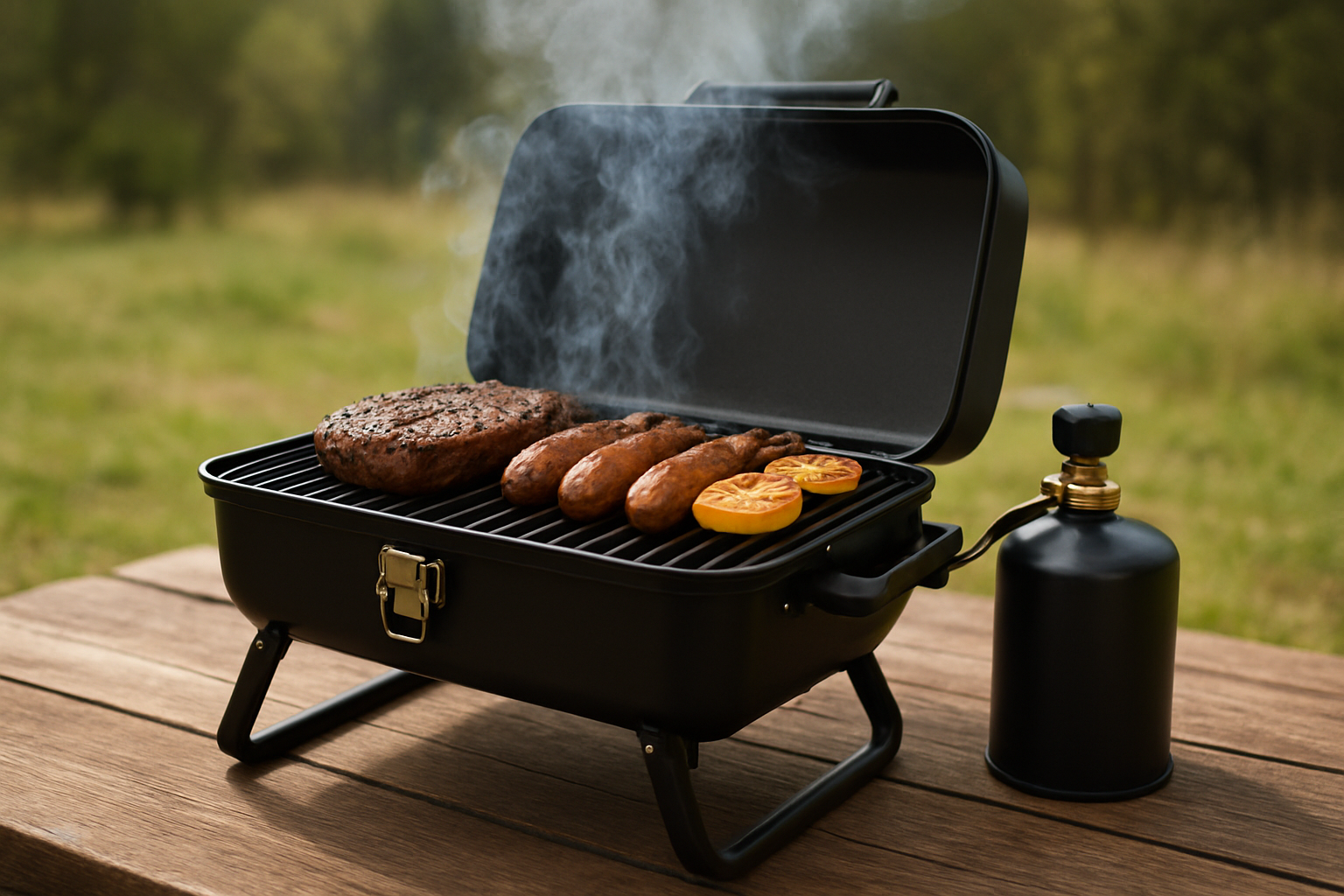
Choosing fuel is not just about taste; it is a logistical decision that changes your packing list and compliance. Here is how Searcase approaches it in the field, with emphasis on flavor, setup speed, and environmental realities.
Altitude and wind can change everything. At 6,000 feet [1,829 meters] and higher, air density drops, slowing combustion and reducing sear. Wind robs heat even faster, especially on open grates. Searcase’s altitude playbook includes wind baffles, slightly higher dome temps before adding food, and a lean toward infrared and griddles that shelter the flame. A simple aluminum wind screen often boosts grate temps by 25 to 50 degrees Fahrenheit [13.9 to 27.8 degrees Celsius] in gusty conditions.
Fuel comparisons matter, too. For a deep dive on smoke taste, see our pellet vs charcoal flavor test. In blind tastings with mixed crowds, we see charcoal win on burgers and pellet smoke shine on wings and pork tenderloin, while propane is chosen for consistency with veggies and fish. The takeaway: match fuel to food and constraints, then let seasoning and technique do the rest.
Fast setup is a product of good packing and a repeatable routine. Whether you are at a campsite or a crowded parking lot, prep your workflow so the first flame happens in under two minutes. Here is a compact playbook used in Searcase field tests.
| Step | Gas | Charcoal | Pellet | Electric |
|---|---|---|---|---|
| Unpack + Stage | 1 to 2 min | 1 to 2 min | 1 to 2 min | 1 to 2 min |
| Ignition | 10 to 20 sec | 2 to 3 min (chimney light) | 30 to 60 sec (prime) | 10 to 20 sec |
| Stabilize to Cook Temp | 4 to 6 min | 12 to 20 min | 8 to 12 min | 8 to 10 min |
| Total Time to First Sear | 5 to 8 min | 15 to 25 min | 10 to 15 min | 8 to 12 min |
Pro tip: pre-oil and portion proteins at home, then vacuum seal. Your cooler stays cleaner, you reduce setup clutter, and cook time becomes the only variable left.
Grills are machines that live rough lives in the back of cars and under stadium flags. A few simple maintenance habits drastically reduce surprises. Searcase specializes in maintenance and safety tutorials and troubleshooting tips that are realistic in the field. If problems pop up curbside, use our portable grill field repair guide to diagnose and fix issues fast.
For longevity, wipe down grates while warm, empty grease trays before transport, and store regulators and ignition cables in a small dry bag. Searcase’s step-by-step maintenance tutorials cover piezo igniter swaps, hinge tightening, grate re-seasoning, and safe regulator replacement so your grill is always ready by the next kickoff or sunrise.
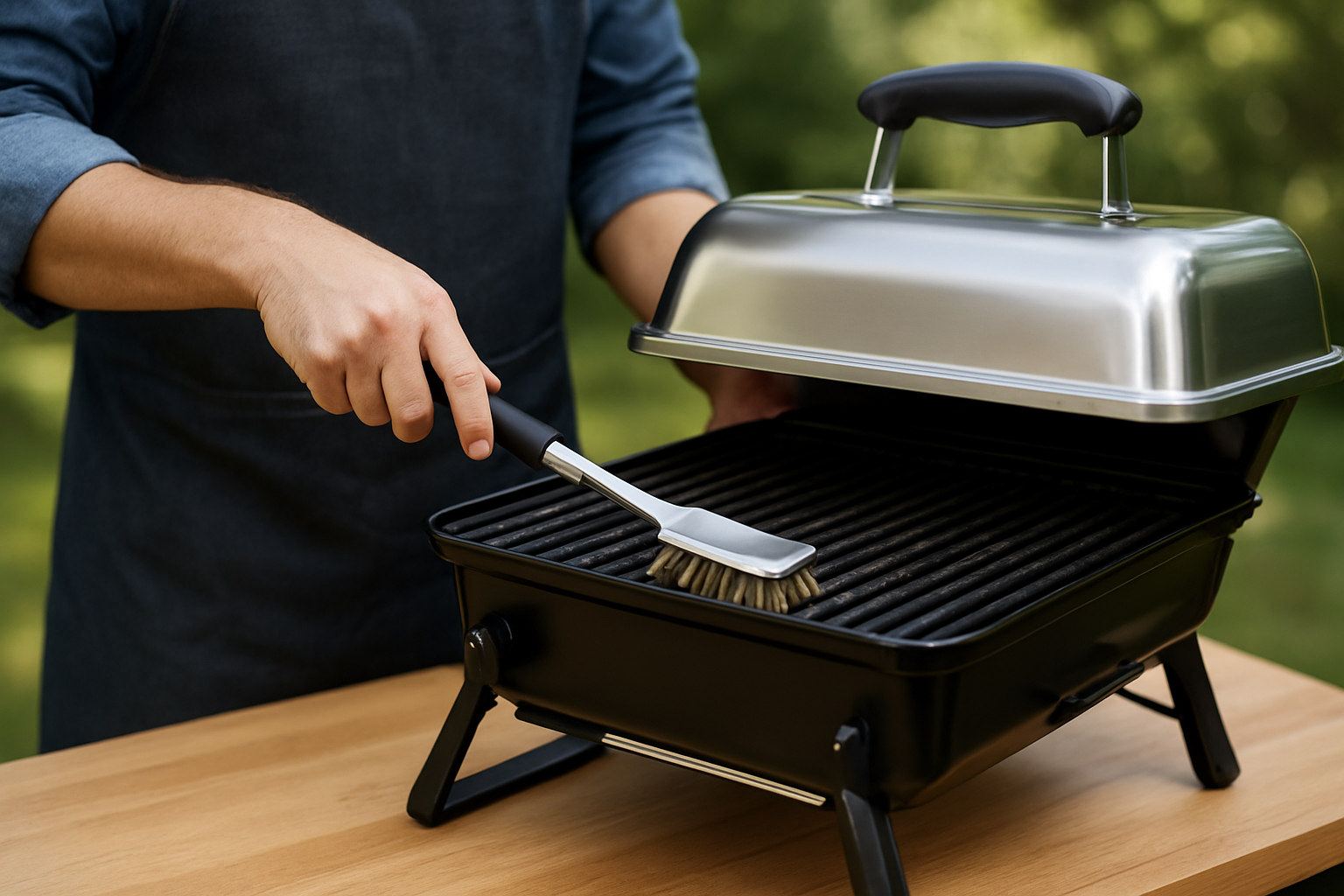
Great cooks leave no mess. Many parks and stadiums enforce strict rules about ash, grease, and gray water. Searcase’s cleanup guides focus on speed and compliance so you can exit fast and clean.
Want a printable checklist? Searcase’s field-tested lists include fuel math, food portions per person, and a teardown sequence that fits busy exits after big games.
To finish, plug your needs into this quick matrix and see which archetype rises to the top. Then match a model that fits your budget and brand preferences.
| Priority | Best Match | Why |
|---|---|---|
| Fastest setup and least mess | Tabletop Propane [Liquefied Petroleum Gas] Grill | Click ignition, stable heat, common fuel, easy cleanup |
| Deepest smoke flavor | Portable Pellet Mini-Smoker | Thermostat control and wood-fired taste with minimal babysitting |
| Ultralight packing | Folding Charcoal Box or Backpacking Wood Stove | Packs flat or nests in pot; lightest carry |
| Big breakfasts and crowd control | Two-Burner Gas Griddle | High surface area and twin zones for speed |
| Steakhouse sear in wind | Infrared Briefcase Grill | Directed heat and reduced flare-ups |
| Flame restrictions | Electric Grill-Griddle Hybrid | No open flame; compliant where gas/charcoal are banned |
Searcase exists for exactly these tradeoffs. We field-test for plant-based and conventional grilling so your marinated tofu, veggie kebabs, ribeyes, and wings all get a fair shake. Our fuel comparisons (pellet vs. charcoal) include side-by-side flavor panels, and our windy ridge tests double-check heat stability before we put our name behind a pick.
Pick the right tool for your cook, and the outdoors turns into your favorite kitchen. In this showdown, you saw where packability, setup speed, and fuel type intersect with real constraints like wind, altitude, and venue rules.
Imagine next season with a dialed kit: your grill lights the first time, holds temp in gusts, and breaks down in minutes without a trace. In the next 12 months, Searcase will roll out even more field-tested comparisons and maintenance walk-throughs to keep your gear humming. Which grill will earn a permanent spot in your trunk among the best portable grills for camping and tailgating?
Explore these authoritative resources to dive deeper into best portable grills for camping and tailgating.
Searcase delivers field-tested comparisons, maintenance and safety tutorials, and troubleshooting tips so outdoor enthusiasts choose the right grill and adapt to any conditions for seamless on-the-go cooking.

Discover senior-friendly portable grills with safe, easy setup. Compare top picks, fuel choices, and a checklist for stability, low lifting, and cost.
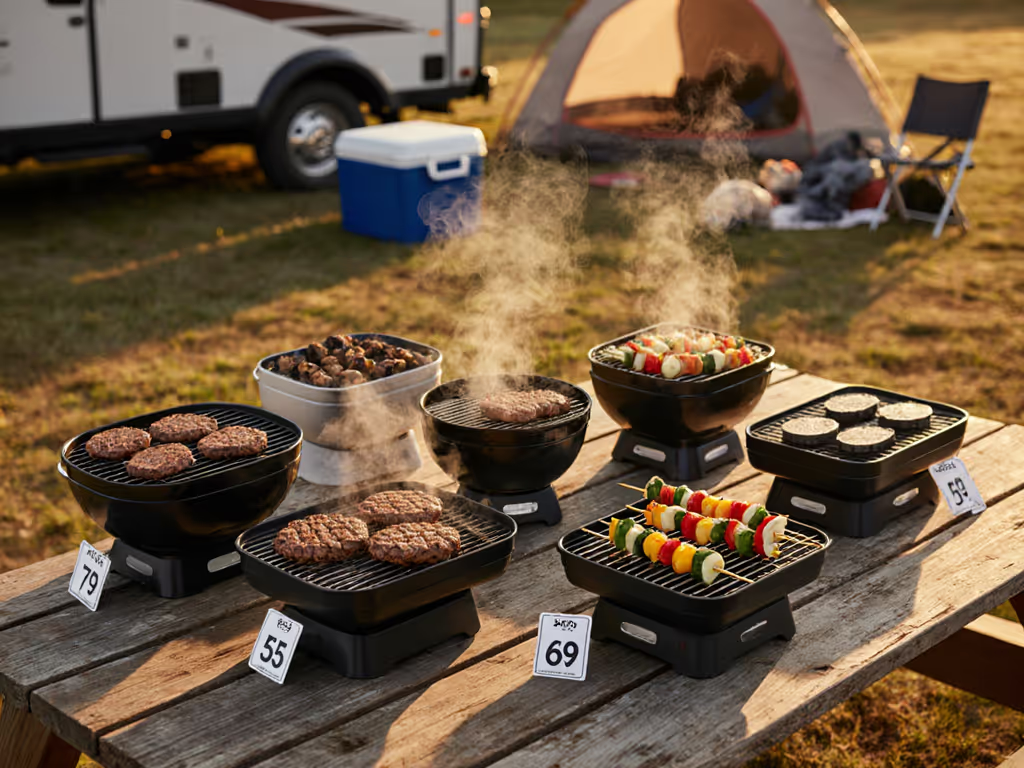
Compare seven portable grills under $100 with real-world testing, fuel availability tips, and cost-per-meal math to pick a packable, reliable cooker.
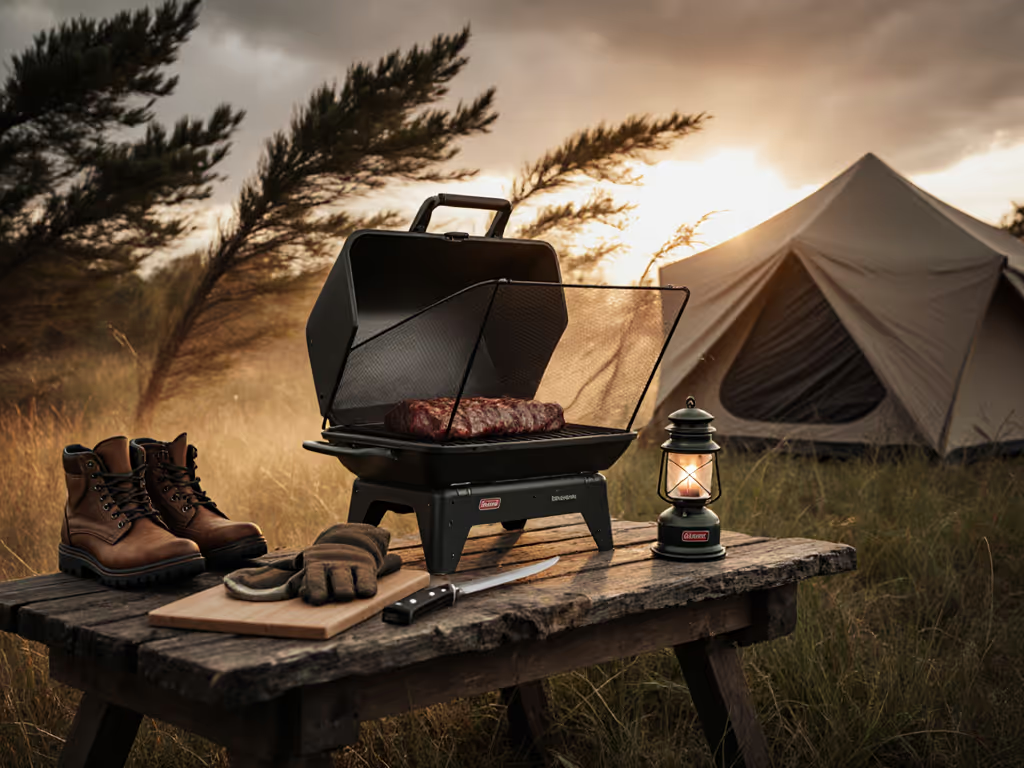
Keep a small grill stable at 160°F in 15+ mph winds and ready in under 2 minutes. Get field-tested picks and windbreak tactics for safe game processing.
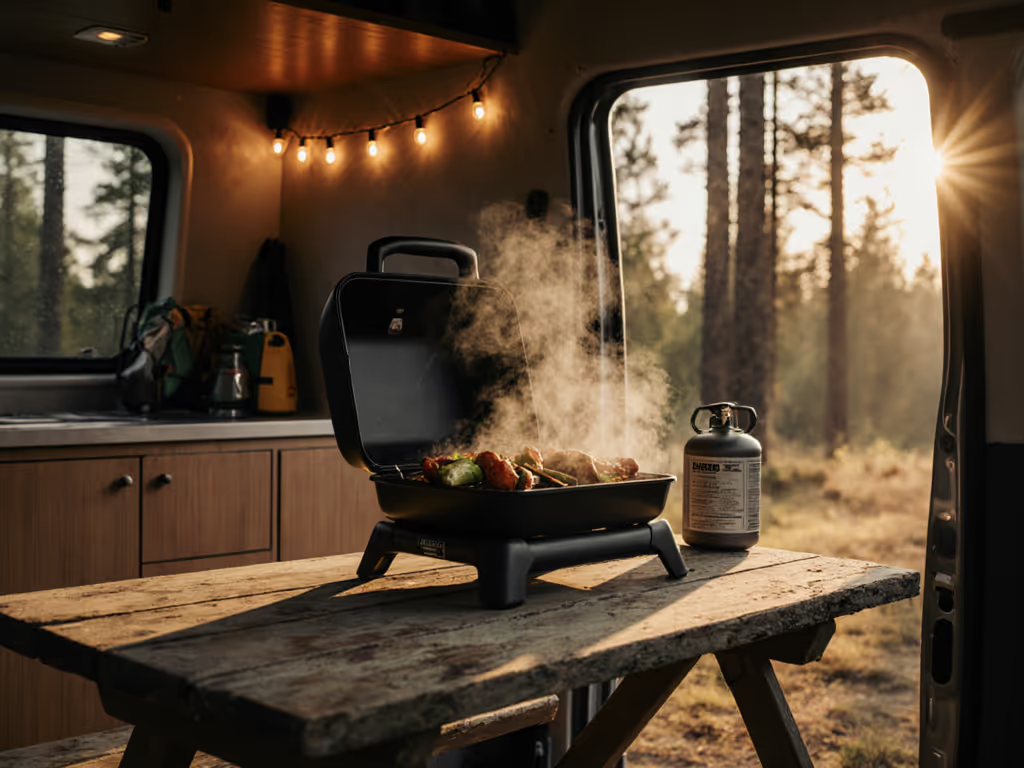
Master a 90-second grill setup for van life with step-by-step tactics, gear picks, and fixes for wind, fuel mix-ups, and cleanup to cook fast, calm, and clean.